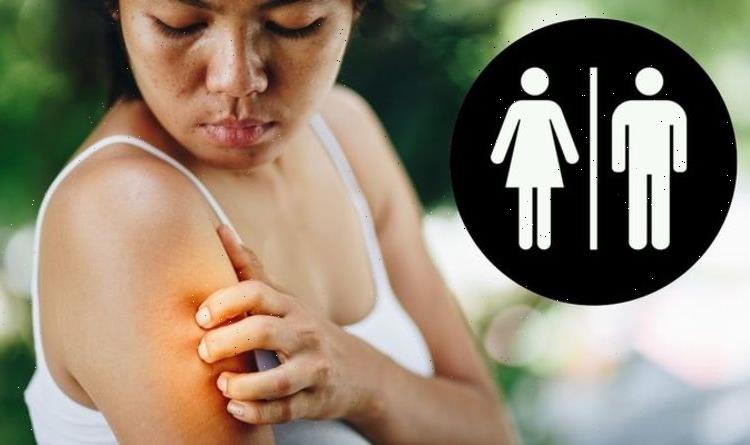Loose Women: Eamonn Holmes discusses his issues with shingles
We use your sign-up to provide content in ways you’ve consented to and to improve our understanding of you. This may include adverts from us and 3rd parties based on our understanding. You can unsubscribe at any time. More info
Since shingles develop into a rash on the skin, it is certain this is where symptoms will start to appear.
Specifically, with a tingling or painful sensation in an area of the skin.
Shingles can appear in any area of the body, from the most visible to the most private.
As well as a tingling sensation in the skin, a headache will start to develop or a patient may start to feel generally unwell.

It is at this point that the person in question must call 111 to get advice on next steps.
A few days after the tingling begins, the NHS warns that a rash will appear on the skin.
This rash will appear as blotches on the skin and on just one side of the body.
If the rash is on both sides, it is unlikely to be shingles, says the NHS.
Shingles is not uncommon and not incurable, so there are treatments and all of them are doable at home.
This includes:
• Taking paracetamol, this is to ease the pain.
• Keeping the rash clean and dry to reduce the risk of infection
• Wearing loose-fitting clothing
• Using a cool compress a few times a day

While these are tips of what a person with shingles should do, there are also a number of things the NHS says they shouldn’t do.
Such as:
• Letting dressings or plasters stick to the rash or,
• Using antibiotic cream as this will slow the healing.
In terms of recovery, shingles can take about four weeks to heal and clear.

In the aftermath of shingles, the skin can remain painful, but importantly, it will get better over time.
Whilst you have shingles try to stay away from certain groups to avoid infecting them with chickenpox.
This means avoiding groups such as pregnant women who have not had chickenpox before, this means people with a weakened immune system and babies under the age of a month.
A note, although someone can get chickenpox from someone with shingles, they cannot get shingles from someone with chickenpox.
Source: Read Full Article
